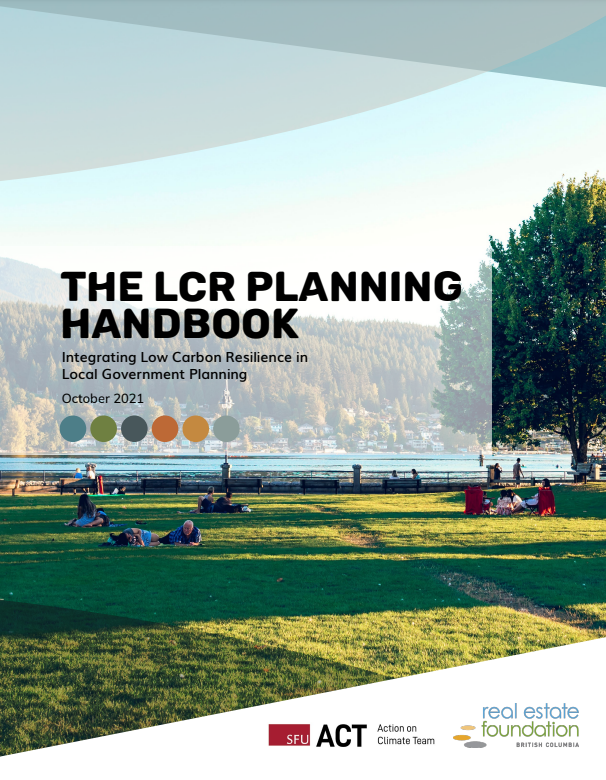Built on a platform of collaboration
A regional growth strategy (RGS) is a voluntary consensus-based regional land use planning policy document coordinated by a regional district for its member municipalities. It is developed collaboratively between local governments, with engagement of the province, First Nations, other public bodies, the public, business and community stakeholders, and addresses regional issues such as transportation, economic development, housing needs and settlement patterns. A regional growth strategy is initiated, developed, adopted, and implemented by the regional district in partnership and with the acceptance of all the municipalities and adjacent regional districts.
An RGS provides long-range sustainability planning direction for regional districts and municipal official community plans (OCPs) within regional districts and provides a platform for discussion related to the integration of provincial programs.
The regional growth strategies legislation identifies provincial goals which encourage an integrated sustainability perspective. A main objective is to avoid urban sprawl which is consistent with local government action on climate change.
RGS Goals
Section 428(2) of the Local Government Act sets out a comprehensive list of goal to which an RGS should work toward:
- Avoiding urban sprawl and ensuring that development takes place where adequate facilities exist or can be provided in a timely, economic and efficient manner
- Settlement patterns that minimize the use of automobiles and encourage walking, bicycling and the efficient use of public transit
- The efficient movement of goods and people while making effective use of transportation and utility corridors
- Protecting environmentally sensitive areas
- Maintaining the integrity of a secure and productive resource base, including the agricultural and forest land reserves
- Economic development that supports the unique character of communities;
- Reducing and preventing air, land and water pollution
- Adequate, affordable and appropriate housing
- Adequate inventories of suitable land and resources for future settlement
- Protecting the quality and quantity of ground water and surface water
- Settlement patterns that minimize the risks associated with natural hazards
- Preserving, creating and linking urban and rural open space including parks and recreation areas
- Planning for energy supply and promoting efficient use, conservation and alternative forms of energy
- Good stewardship of land, sites and structures with cultural heritage value
Looking at regional growth planning with a holistic sustainability lens enables a region to more clearly identify and address the links between land use and other regional development influences such as jobs and the economy. Engaging the business community including the Chambers of Commerce and the Urban Development Institute as well as other stakeholder groups such as Tourism Associations in addition to consulting with the Ministry of Jobs, Tourism and Skills Training can help with identifying economic opportunities in different regions.
Provincial agencies provide the provincial perspective on regional issues during strategy development through participation on an intergovernmental advisory committee. The process for developing regional growth strategies is outlined in Part 13 of the Local Government Act. The intent of the legislation is to create an enabling local government framework for collaborative regional planning and growth management.
The process requires early and on-going consultation with member municipalities, First Nations, adjacent local governments and other local authorities, community members and interest groups, and senior government agencies. Public participation is key, as the impacts of growth affect all residents’ quality of life and business success.
The Local Government Act also directs local governments to include targets, policies and actions for the reduction of GHG emissions in their Regional Growth Strategies.
A RGS must also address housing, transportation, regional services, parks and natural areas, economic development and greenhouse gas emissions reduction and it can also deal with other interests. Some regions will undertake an RGS to focus on urban containment. Others may choose to focus on how critical regional issues, such as the water supply, air quality, and/or transportation management link to growth management more broadly.
Regions with Regional Growth Strategies:
- Capital Regional District
- Central Okanagan Regional District
- Comox Valley Regional District
- Fraser Valley Regional District
- Metro Vancouver Regional District
- Regional District of Nanaimo
- Regional District of North Okanagan
- Okanagan-Similkameen Regional District
- Squamish-Lillooet Regional District
- Thompson Nicola Regional District
How can an RGS be used to take action on climate change?
An effective regional growth strategy guides growth in a way that minimizes emissions through efficient use of land and water resources, infrastructure and transportation systems. In addition, maintaining greenspace serves to maximize CO2 sequestration alongside providing other environmental, social and economic benefits.
While unplanned regional growth can set a permanent pattern of land development and emissions performance that can be difficult to change, a well-developed RGS and well-planned growth can bring benefits such as:
- More cost-effective infrastructure servicing
- Managed transportation impacts
- Better air quality and reduced emissions
- Protected green space and local agricultural capacity
- More secure watersheds and aquifers
- Greater success for businesses in communities due to increased density of customers and workers
- A greater supply of housing and more diverse of housing options
- Healthier residents due to increases in walking and cycling opportunities
- A more coordinated approach to development and decision-making
- Better managed public and development industry expectations
An RGS can guide land use across a region to:
Learn more:






